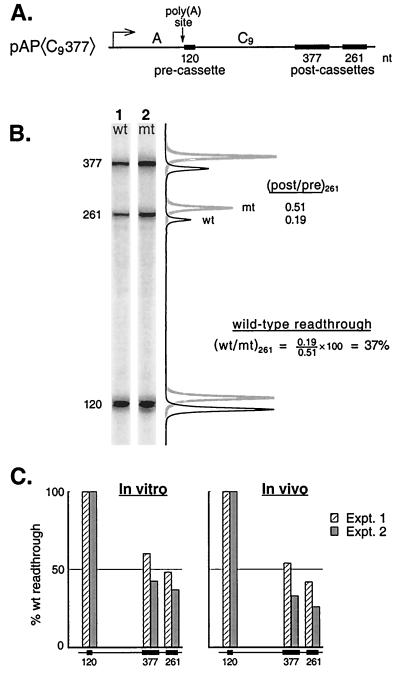FIG. 1.
Poly(A) signaling in vitro. (A) The pAP〈C9377〉 construct drawn to scale. The arrows indicate the start point of transcription for the SV40 early-early promoter (9) and the position of poly(A) site cleavage (20). (B) G-less cassette transcripts from a signaling assay carried out with mutant and wild-type versions of pAP〈C9377〉. The line graphs showing signal intensities for the two gel lanes were superimposed, but offset slightly for clarity, and then aligned with the gel images. (C) Quantitative comparison of poly(A) signaling in vitro with poly(A)-dependent termination in vivo on the pAP〈C9377〉 template. The efficiency of elongation (% wild-type readthrough) downstream of the wild-type poly(A) site is expressed (after normalizing all signals on each template to that for the 120-nt cassette) as the ratio of the intensity for each cassette on the wild-type template to that for the same cassette on the mutant template. (The images in panel A were also normalized with respect to the 120-nt cassette for purposes of presentation.)

